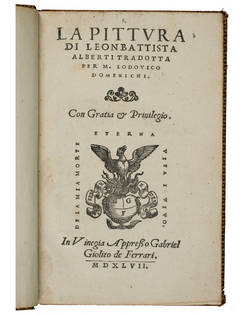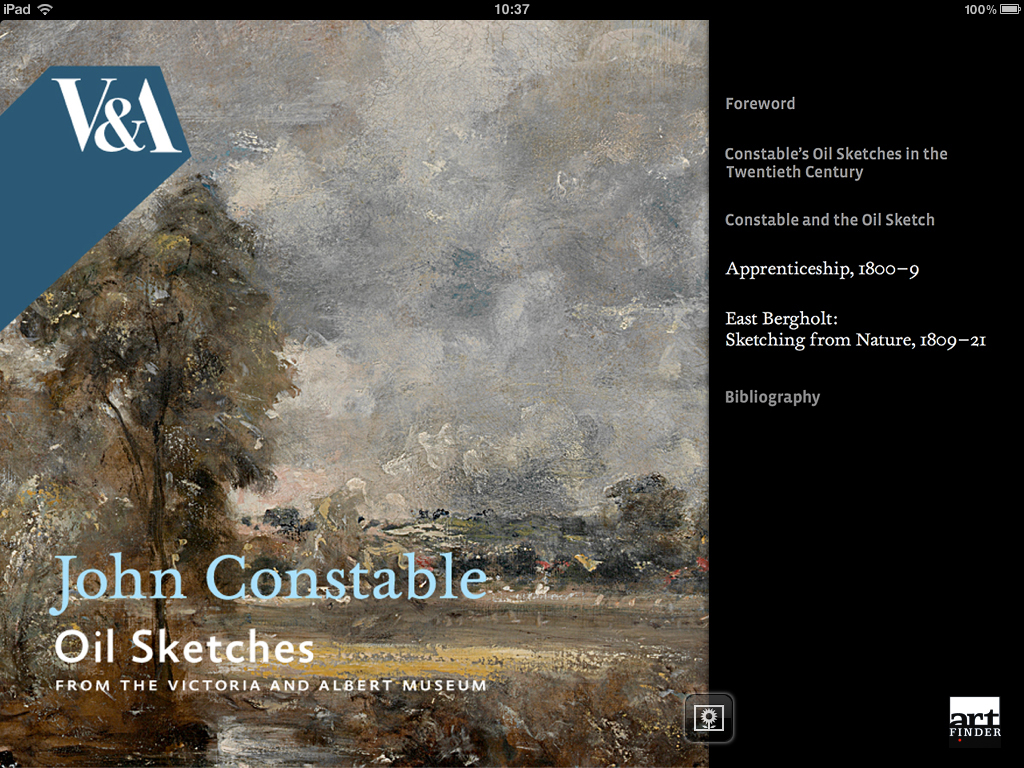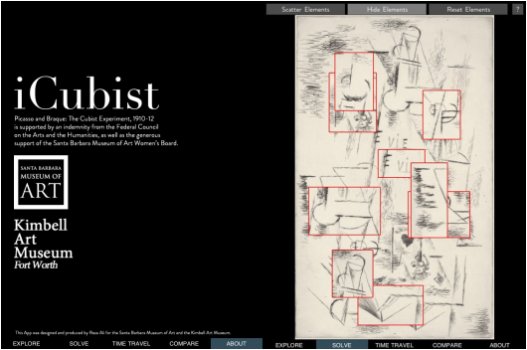 In the 15th century, the Italian renaissance polymath, Leon Battista Alberti, wrote a famous treatise on painting titled De pictura. In his treatise, Alberti praised painting above other art forms such as sculpture because painting often went beyond the act of mere imitation and was able to create an illusion that could persevere through the centuries. Moreover, the art of painting was a uniquely visual experience and, unlike sculpture, it did not incite the desire to touch, for what we saw in a painting remained poetically out of our reach.
This treatise postulated by Alberti during the period of the Renaissance is not entirely archaic and arcane to the world of today. We still take pleasure in the transitory ability to escape into the painted world we see before us, and we are in still in favor of preserving the the illusion we see before us. But have we become drawn to what was only considered possible in the realm of sculpture, the desire to touch a painting?
In the 15th century, the Italian renaissance polymath, Leon Battista Alberti, wrote a famous treatise on painting titled De pictura. In his treatise, Alberti praised painting above other art forms such as sculpture because painting often went beyond the act of mere imitation and was able to create an illusion that could persevere through the centuries. Moreover, the art of painting was a uniquely visual experience and, unlike sculpture, it did not incite the desire to touch, for what we saw in a painting remained poetically out of our reach.
This treatise postulated by Alberti during the period of the Renaissance is not entirely archaic and arcane to the world of today. We still take pleasure in the transitory ability to escape into the painted world we see before us, and we are in still in favor of preserving the the illusion we see before us. But have we become drawn to what was only considered possible in the realm of sculpture, the desire to touch a painting?
This question of touch is a thought provoking one because of a recent phenomenon that I like to refer to as the “slide to unlock”. Yes, this phenomenon is none other than our increasing desire to avail ourselves of the sense of touch. Apple has gently nudged us along into the wonderful world of touch through iPhones, iPads, and iPods. So, it suffices to say that in the technological realm, we have effectively and decisively entered into the era of the sensory. And this definitive entry into the realm of the sensory has led to the development of apps, some of which have enabled us to explore the world of art at our very fingertips.
Nowadays, we can explore artworks using our sense of touch without compromising our moral integrity or damaging the artwork, and shattering the illusion before us. For instance, in Artfinder’s app on John Constable’s oil sketches from the Victoria and Albert Museum, we “can zoom to show each of the sketches in their incredible painterly detail, and follow Constable’s progress from Suffolk, to London and Brighton.” Artfinder has also collaborated with various other museums to create apps that augment and physically sensitize the viewing experience. As such, the way we engage with art may be undergoing a paradigm shift; a shift towards the touch.
Consequently, more and more museums are now incorporating the sense of touch into what was hitherto seen as predominantly visual and contemplative experience. Earlier this summer, in the exhibition titled “Picasso and Braque: The Cubist Experiment, 1910-1912”, the Santa Barbara Museum of Art provided visitors with iPads that were “equipped with a specially developed iCubist application to scrutinize and delve deeply into four key paintings.” The app also allowed visitors to “deconstruct a cubist composition and attempt to put it back together.” The iCubist app developed for the Santa Barbara Museum of Art demonstrates how the sense of touch, in unison with the sense of sight, can help demystify a movement such as Cubism.
It is also interesting to note how the contemporary art world is evolving with the rise of the touch. For instance, artist David Hockney began painting on his iPhone in 2008 and last year he began using his iPad to create art. Using the Brushes app, Hockney would draw flowers, using just the edge of his thumb, and send them to his friends. His oeuvre now includes landscapes, still life, and self-portraits all created by a sweeping touch, rather than a stroke, of creativity and ingenuity. Currently, his work is being shown at the Royal Ontario Museum in the exhibition titled “David Hockney’s Fresh Flowers: Drawings on the iPhone and iPad.”
So is the art world moving in tandem with the technological world? Is it stepping into the realm of the sensory?
As artists such as David Hockney remain a rare few, the art of painting on tangible mediums such as canvas will most likely survive decades of technological progress. The modern day audience, however, may be more willing and receptive toward the introduction of touch into the viewing experience. This is because, as an audience, we may be drawn towards what can only be termed as a two-part deception; to make tactile, what in reality is untouchable, while reveling in a scene that in essence, is a grand illusion.







